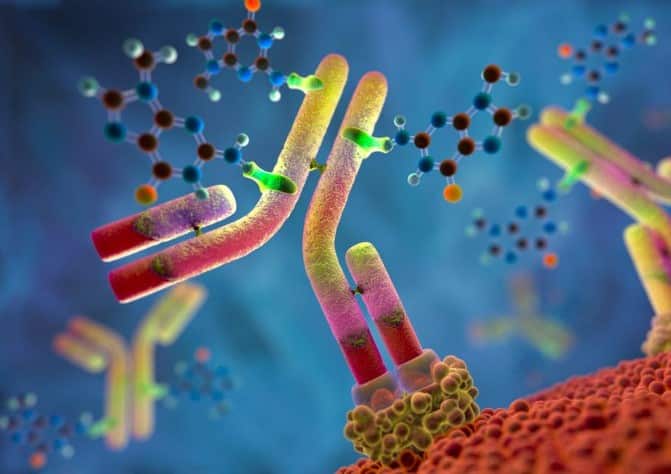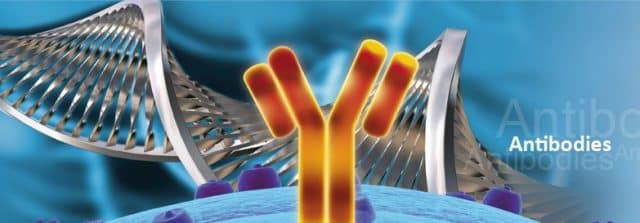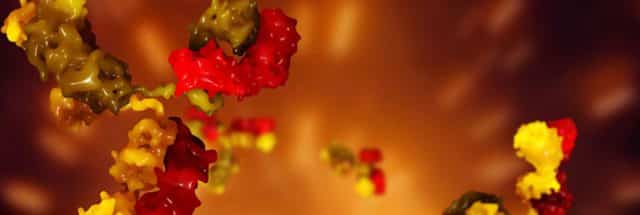___
Submitted by Carol A. Clark, … with LA Daily Post
… from Los Alamos National Laboratory
___
[ Editor’s Note: This is a bit out of our regular fare, if there is such a thing here at VT, as we are known for wandering off the plantation from time to time.
In its simplest form this ‘bar code’ story is a quality control PR announcement…but a rather cool one as it is for the sequencing of antibodies, where all the big disease treatment breakthroughs will be coming from in the future.
This is a good bookend story for the suppressed science series we did in late summer and early fall, compliments of our science editor and our various branches of the VT network that have worked in the various fields.
Enjoy the future, as we sure hope to… Jim W. Dean ]
– First published … February 04, 2015 –
LANL News
More than 100 researchers from around the world have collaborated to craft a request that could fundamentally alter how the antibodies used in research are identified, a project potentially on the scale of the now-completed Human Genome Project.
“We propose that antibodies be defined by their sequences, just as genes are,” said Andrew Bradbury, a researcher at Los Alamos National Laboratory, “and they should be made recombinantly in cell lines.”
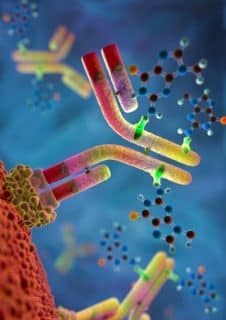
Referring to antibodies according to the sequences encoding their various subunits, their concentrations and the standardized experimental buffers used for each assay would enable researchers world-wide to employ the same affinity reagents under the same conditions.
The sequence of an antibody or binding reagent, is the ultimate “bar code” for that reagent, ensuring that everyone can use the same reagent for the same target.
Deriving the bar code involves either selecting antibodies from in vitro libraries, or cloning and sequencing antibody genes from hybridomas, the cells that traditionally make monoclonal antibodies.
However, it will require a paradigm shift in the way antibodies are supplied. Antibodies are the specialized proteins that normally help the body identify and neutralize bacterial and other attacks on the immune system, and have been exploited by scientists as specific binding reagents.
The problem that the researchers seek to resolve with their new sequencing and recombinant expression demand is that of antibody quality control and accurate identification.
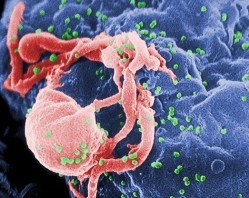
Antibodies are the only widely used reagents in biological research that are not defined at the sequence level (unlike genes, oligos, plasmids, recombinant proteins, etc.), Bradbury noted.
The quality of all antibodies produced varies enormously according to the manufacturer, and most antibodies are rarely validated and between-batch differences are common, the researchers note.
Also, the quality of the documentation accompanying the batches (for instance, on the concentration of antibody present in each vial) is enormously variable; even when it is provided, it often doesn’t correspond to the batch being supplied, the letter says.
“To stem the enormous waste in materials, researcher time and money caused by their lack of validation and characterization, antibodies must be defined by their sequences, and in the main, produced de novo under standardized conditions,” the writers point out.
“De novo” production in this case would refer to the process of generating antibodies or other binding reagents from scratch using methods that do not involve animal immunization, rather than cloning antibodies from cells derived from immunization.
For polyclonal antibodies, for example, production is based on injecting an animal with a protein and then later extracting the antibodies that the animal’s blood is carrying in response to the immunizing protein.
The varied antibodies are anything but precise, however, with only 0.5 to 5 percent of the product being the desired antibodies, ready to respond to the original target.
The rest are antibodies already in the animals’ blood stream, and represent previous immunological challenges. Nature is simply not precise in this process, and the scattershot harvesting of so many of the wrong antibodies is producing waste in the research pipeline, by producing antibodies with poor specificity.
“What we are proposing is to move over to an in vitro method of generating antibodies that will not require the use of animals at all, and importantly, will directly lead to molecules with known sequences,” Bradbury said.
The scores of researchers signing the letter are united in their desire for a more structured, accurate antibody identification system, although Bradbury and his cohorts recognize that significant costs will be associated with the effort.
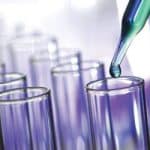
“The National Institutes of Health and European Union were very proactive in starting pilot programs to address part of this issue, and given the long-term investment required, we wanted to encourage them to continue,” he said.
“Given advances in the generation of specific binding reagents by in vitro methods, and the recent discussions on reproducibility in science, we thought it was about time this issue was addressed.”
To make uniform reagents in the laboratory for all 20,000 human gene products, the authors estimate that using current technology, an investment of roughly a billion dollars would be required.
“This is less than the money wasted worldwide on bad reagents in under two years,” Bradbury said, and it would be recovered in time through the production of better research results, the team suggests. However, the total amount required would be expected to be far less if appropriate investments in technology development were made.
The paper is published in this week’s edition of the journal Nature, online at http://nature.com/articles/doi:10.1038/518027a.
ATTENTION READERS
We See The World From All Sides and Want YOU To Be Fully InformedIn fact, intentional disinformation is a disgraceful scourge in media today. So to assuage any possible errant incorrect information posted herein, we strongly encourage you to seek corroboration from other non-VT sources before forming an educated opinion.
About VT - Policies & Disclosures - Comment Policy

